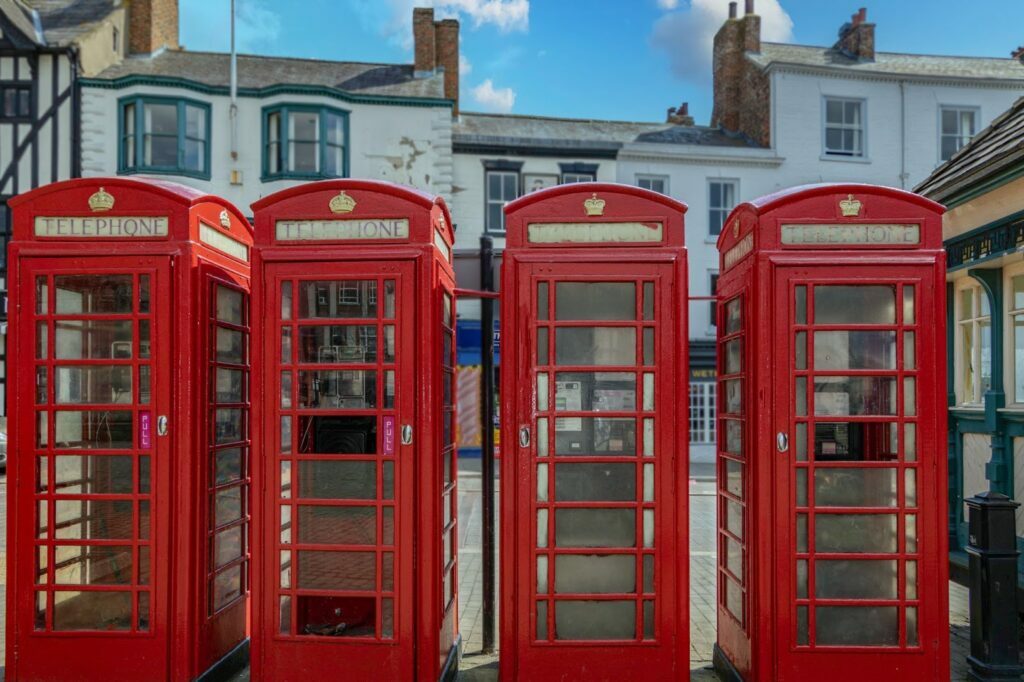What is the Difference Between a Personalised Mobile Number and a Gold Mobile Number?
ISDN and PSTN Are Being Switched Off and the WLR Withdrawal
2023 and 2025 will bring big changes as large telecommunication transitions are currently underway. As large corporations guide the way to a new future, will we as small businesses or individuals be left behind? In this article, we uncover the planned changes and how they will impact our residential or business phone numbers.
All About the PSTN and ISDN Switch Off
According to Openreach, the country’s largest broadband network and British Telecom’s (BT) fully owned subsidiary, the old analogue PSTN (public switched telephone network) will be shut down in 2025. PSTN supports a number of products, including ISDN (integrated services digital network) lines, which are available to many businesses. Depending on your business size, these can be ISDN2 or ISDN30 lines, as well as WLR (wholesale line rental).
A key point to understand about the 2025 switch off is that not only voice services will be affected, but also broadband services. Additionally, PSTN-connected devices such as alarms, EPOS (electronic point of sale), access control systems, faxes and CCTV will require upgrading. Without a new telephony solution, businesses and consumers will lose service if they have not switched by December 2025.
Reason for the switch off
The PSTN will be retired due to ageing. With its 20th-century roots, the PSTN is increasingly unable to keep up with 21st-century communications.
In the past decade, broadband services have improved in quality and reliability, and the PSTN has evolved to support the transition to almost a completely digital network. As a result, most traditional fixed line telephony users will no longer need fixed-analogue services. Calls and lines will cease to exist on traditional fixed lines. Since the PSTN’s legacy infrastructure and equipment are now ageing and inefficient, Openreach’s priority is to maintain a fibre-first network. Throughout the UK, every phone line will use Internet Protocol (IP) over a fibre-based network by December 2025.
Switch off timeline
- Nov 2017: Openreach announced plans to phase out the PSTN by 2025.
- Jun 2019: Two pilot sites (Salisbury and Mildenhall) were announced. Fibre network to be strengthened by Openreach.
- Dec 2020: Openreach began retiring PSTN and ISDN. At the Salisbury trial site, a stop sale notice was issued.
- May 2021: Notice to cease selling legacy services at Mildenhall was issued.
- Dec 2022: Removal of legacy products and services from Salisbury and Mildenhall trial sites
- Sep 2023: A stop sell notice will be sent out. No new lines will be installed, no lines will be converted and no ISDN channels will be added.
- Dec 2025: End of PSTN and ISDN
Stop sell
The term stop sell refers to the restriction of sales of copper and fibre-to-the-cabinet (FTTC) broadband within fully fibre-enabled exchange areas following the conversion of 75% of them to fibre. With a phased approach, Openreach is deploying full fibre across the UK to ensure a seamless transition. The rollout plan for Openreach will be updated every quarter with new exchanges.
Impact of the 2025 closure
All non-voice services connecting to PSTN or ISDN lines will be affected. A variety of alarm systems, point of sale machines, access control systems, CCTV and fax machines fall under this category.
A number of products are currently supported by PSTN, including ISDN2 and 30, WLR, LLU SMPF, NBLS and classic products. As a result, these will cease to be operational. Broadband services, such as ADSL (asymmetric digital subscriber line) and FTTC, are also affected by the withdrawal of the WLR telephone service that supports them. It will still be possible to use telecom devices, but they won’t be serviced.
The PSTN switch off poses significant concerns to providers of essential care services, including social services, health care and housing. Vulnerable individuals may be left without emergency assistance if housing associations, local governments and other care providers do not respond in a timely manner.
Replacement products and services
There will be a selection of PSTN replacement products available, depending on the user’s needs and where they’re located.
ISDN will be replaced primarily by VoIP (Voice over Internet Protocol), an internet-based telephone service. Because it requires only an internet connection to function, you won’t have to install costly analogue phone lines in your office. In comparison with ISDN lines, VoIP provides higher call quality, more flexibility and more features.
The Session Initiation Protocol (SIP) is another option in addition to VoIP. Using SIP trunks, your phone system can be connected to the public phone network via IP. Those switching to web-based phone solutions often choose SIP because it can connect to most existing systems.
Among the broadband products that Openreach have introduced to replace traditional broadband services are FTTP, SOGEA (single order generic ethernet access), SOGfast (single order gfast) and SOTAP (single order transition access product).
Impact of the Switch Off on Businesses
The switch off will affect everyone, both at home and in the office, since it will terminate all non-voice services connected to ISDN and PSTN lines.
In other words, you’ll need to upgrade from PSTN to IP before 2025. This will be made possible by Openreach’s phased rollout of the fibre network across the country.
Around 29.5 million PSTN lines are registered in the UK, which translates to millions of companies, local authorities and public organisations connected via PSTN or ISDN. Moreover, nearly 70% of UK businesses are still using landlines. In the absence of an upgrade by 2025, these organisations will experience significant disruption through the loss of connectivity and communication lines.
Preparing for the Switch Off
Your business will benefit from VoIP and hosted telephony sooner if you upgrade your systems now. The sooner you make the switch, the easier it will be for your business to adapt and utilise its features.
A switch off involves switching to a new service, but IP technology has several advantages. Among them are cost savings, increased resilience, improved call quality and more flexibility.
How do I keep my BT number?
You may wonder: ‘How do I keep my BT phone number?’
First, consider your existing numbers. You may want to consider porting your numbers to the new service if your customers are already familiar with them. Porting your number to Phone Numbers Store turns it into a ‘virtual’ number that you can use over the Internet to make and receive calls wither via our hosted voice service (XLHV) or even on a SIM card.
Phone Numbers Store UK: Business Numbers Your Audience Will Remember
Not sure how to proceed? Discover how the PSTN switch off might impact you and how you can find the perfect solution for your business by consulting our experts at Phone Numbers Store. Get in touch with our team today.






